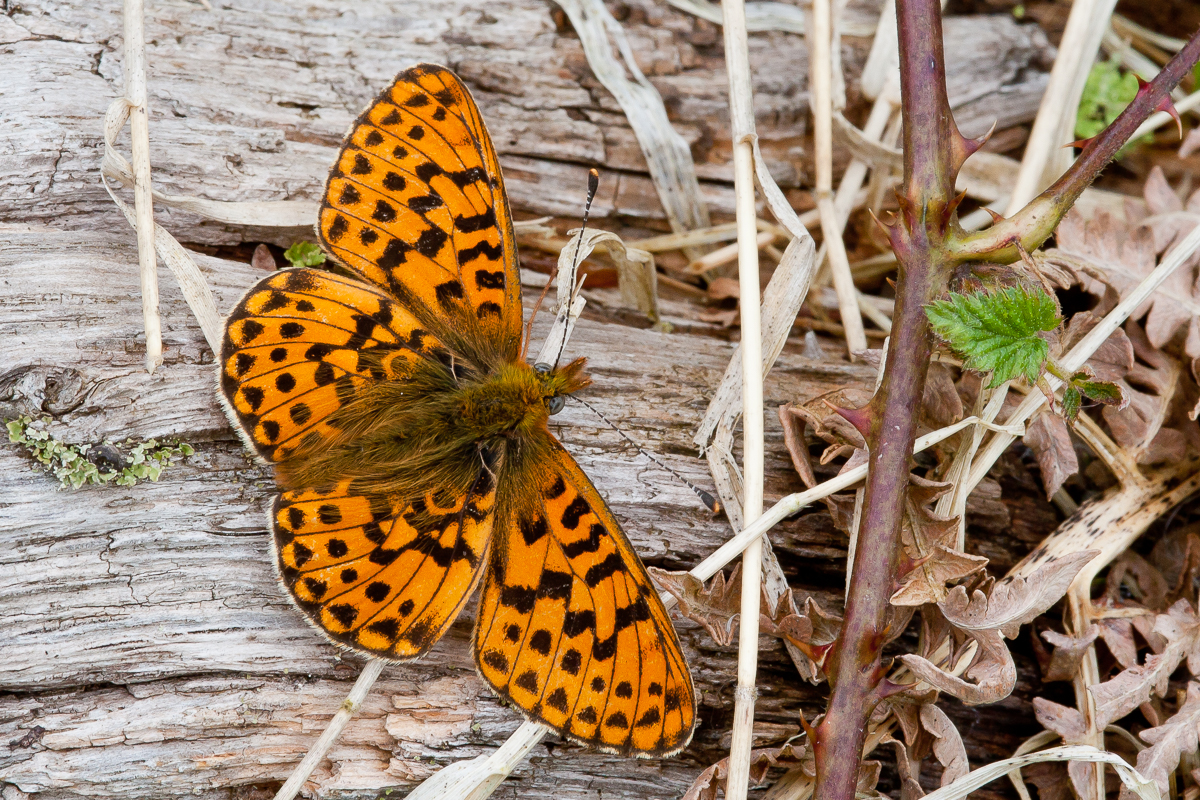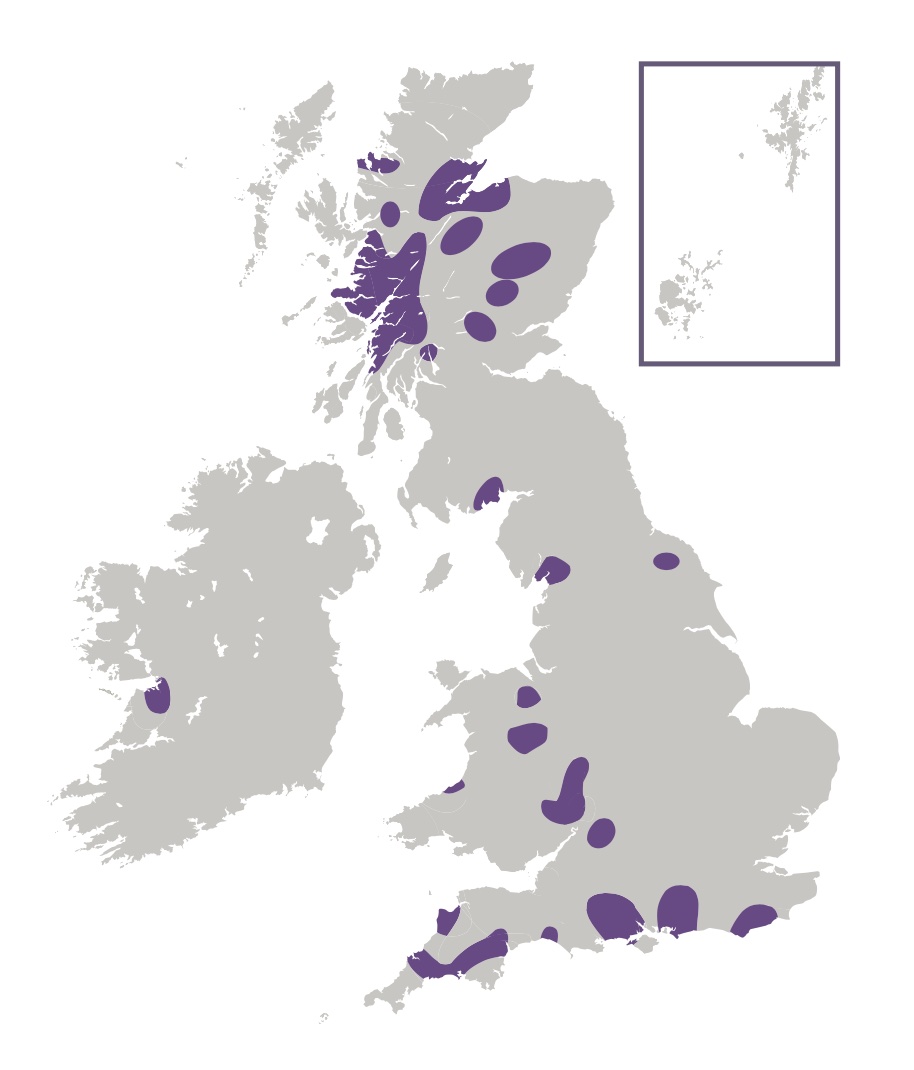
Photo © Peter Eeles
This woodland butterfly gets its name from the series of "pearls" that run along the outside edge of the underside of the hindwing. Males are often seen flying swiftly, low across the breeding site in search of a mate and are extremely difficult to follow, the colouring of the wings providing excellent camouflage against the dead bracken that is often found at these sites. The Pearl-bordered Fritillary may fly with the Small Pearl-bordered Fritillary at certain sites, although the Pearl-bordered Fritillary, which emerges a couple of weeks before the Small Pearl-bordered Fritillary, generally appears much paler in colour as a result.
In England and Wales this butterfly in scattered and isolated colonies south-west of a line running between Denbighshire in the north-west to East Kent in the in south-east. There are also colonies in Westmorland and West Lancashire. It is also widespread in central Scotland, but very local or absent in the north and south of the country. In Ireland it is found in the Burren limestones of Clare and South-east Galway. It is absent from the western and northern Isles of Scotland, the Isle of Man and the Channel Islands. This butterfly forms discrete colonies which vary wildly in numbers, from a couple of dozen to over a thousand, this being largely-determined by the availability of suitable habitat. Most colonies contain a few dozen adults.
Males start their day by nectaring on various flowers, such as those of Bugle, Dandelion, Bird's-foot Trefoil and Buttercup, before patrolling low over the breeding sites in search of a mate, investigating any reddish brown object encountered. When a virgin female is found, the female will fly to a suitable platform, sometimes at some height, where the two mate, staying together for 30 to 60 minutes. Egg-laying females are relatively-easy to follow in flight as they flutter slowly and deliberately low down over vegetation, searching out suitable patches of foodplant on which to lay.

This butterfly is typically found in deciduous woodland containing open areas, such as woodland clearings, that provide the right conditions, foodplants and nectar sources for this species to thrive. This butterfly can also be found in conifer plantations and limestone pavements in some areas. Sites are generally suitable 2 to 4 years after a woodland clearing has been formed, when the foodplants and nectar sources are optimal for this species. However, these sites can quickly become overgrown and, unless there is suitable habitat nearby, colonies will tend to die out.
Adults feed primarily on Bugle (Ajuga reptans). Bluebell (Hyacinthoides non-scripta), buttercups (Ranunculus spp.), Common Bird's-foot-trefoil (Lotus corniculatus), dandelions (Taraxacum spp.), hawkweeds (Hieracium spp.), Ragged-Robin (Silene flos-cuculi), Selfheal (Prunella vulgaris), thistles (Carduus spp. and Cirsium spp.) and Tormentil (Potentilla erecta) are also used.
The primary larval foodplant is Common Dog-violet (Viola riviniana). Heath Dog-violet (Viola canina) and Marsh Violet (Viola palustris) are also used.
